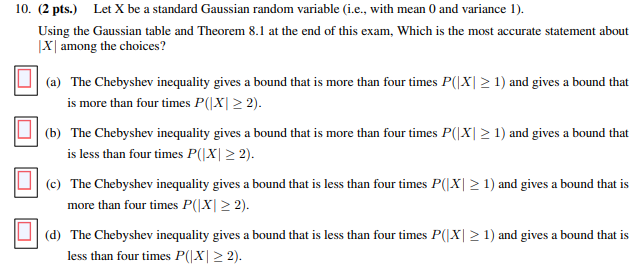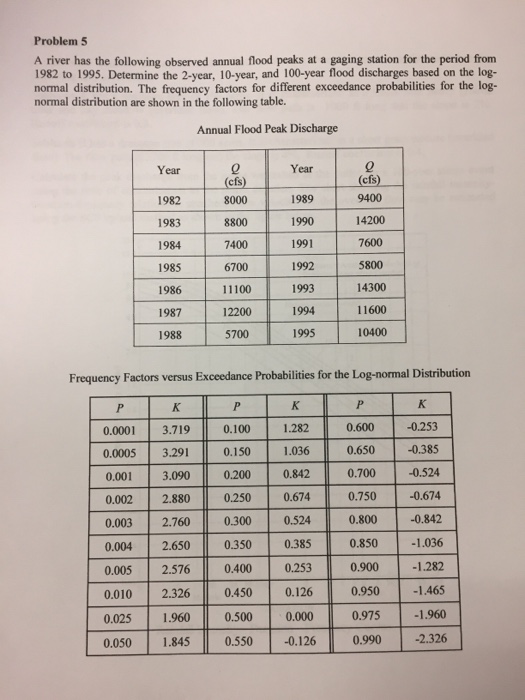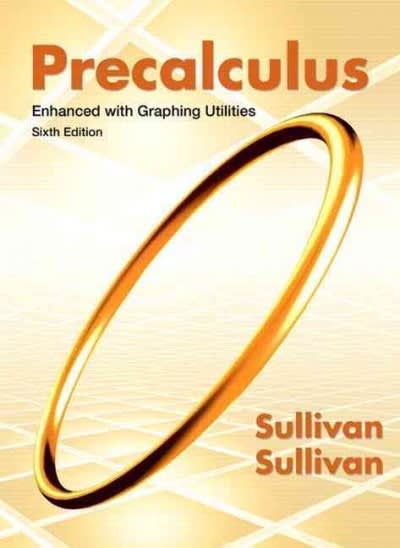Question: Please help the Matlab code to this communication system problem. I'm given the following information and asked to use Matlab to demodulate the signal
Question:
Please help the Matlab code to this communication system problem. I'm given the following information and asked to use Matlab to demodulate the signal non-coherently and use MATLAB to play the audio signal. Any help will be greatly appreciated.
am: This vector is the discrete time signal obtained by sampling the AM-DSB-FC signal s(t), i.e., am[n] = s(nT). The signal s(t) is the result of AM modulating an audio signal of human speech, m(t).
The given Matlab vector is 1200000x1.
Fs is the sampling rate for am in samples per second, i.e., Fs = 1/T.
Fs = 80000
fc is the carrier frequency for am, in Hz.
fc = 20000
Given Hints: load, lowpass, sound, and sqrt
m(t) is a recording of human speech. It has a bandwidth of about 3 kHz.
Let X be an exponential random variable with parameter A. (a) Apply the Markov inequality to bound Pr[X 2 2/A]. (b) Use the Chebyshev inequality to compute the bound. (0) Use the one-sided Chebyshev inequality to compute the bound. (d) Compute the actual probability of this event. 10. (2 pts.) Let X be a standard Gaussian random variable (i.e., with mean ( and variance 1). Using the Gaussian table and Theorem 8.1 at the end of this exam, Which is the most accurate statement about | X ] among the choices? (a) The Chebyshev inequality gives a bound that is more than four times P( X | 2 1) and gives a bound that is more than four times P(|X | 2 2)- (b) The Chebyshev inequality gives a bound that is more than four times P(|X" | 2 1) and gives a bound that is less than four times P(|X | 2 2). (c) The Chebyshev inequality gives a bound that is less than four times P(|X" | 2 1) and gives a bound that is more than four times P(|X | > 2). (d) The Chebyshev inequality gives a bound that is less than four times P(|X | 2 1) and gives a bound that is less than four times P(|X | > 2).Problem 5 A river has the following observed annual flood peaks at a gaging station for the period from 1982 to 1995. Determine the 2-year, 10-year, and 100-year flood discharges based on the log- normal distribution. The frequency factors for different exceedance probabilities for the log- normal distribution are shown in the following table. Annual Flood Peak Discharge Year Year (cfs) (cfs) 1982 8000 1989 9400 1983 8800 1990 14200 1984 7400 1991 7600 1985 6700 1992 5800 1986 11100 1993 14300 1987 12200 1994 11600 1988 5700 1995 10400 Frequency Factors versus Exceedance Probabilities for the Log-normal Distribution P K P K P K 0.0001 3.719 0.100 1.282 0.600 -0.253 0.0005 3.291 0.150 1.036 0.650 -0.385 0.001 3.090 0.200 0.842 0.700 -0.524 0.002 2.880 0.250 0.674 0.750 -0.674 0.003 2.760 0.300 0.524 0.800 -0.842 0.004 2.650 0.350 0.385 0.850 -1.036 0.005 2.576 0.400 0.253 0.900 -1.282 0.010 2.326 0.450 0.126 0.950 -1.465 0.025 1.960 0.500 0.000 0.975 -1.960 0.050 1.845 0.550 -0.126 0.990 -2.326* Question Completion Status: Click Submit to complete this assessment. Question 5 Consider a random variable that follows a log normal distribution with mean =24,154,953 and 0=9 What is the value of parameter w? Click Submit to complete this assessment










